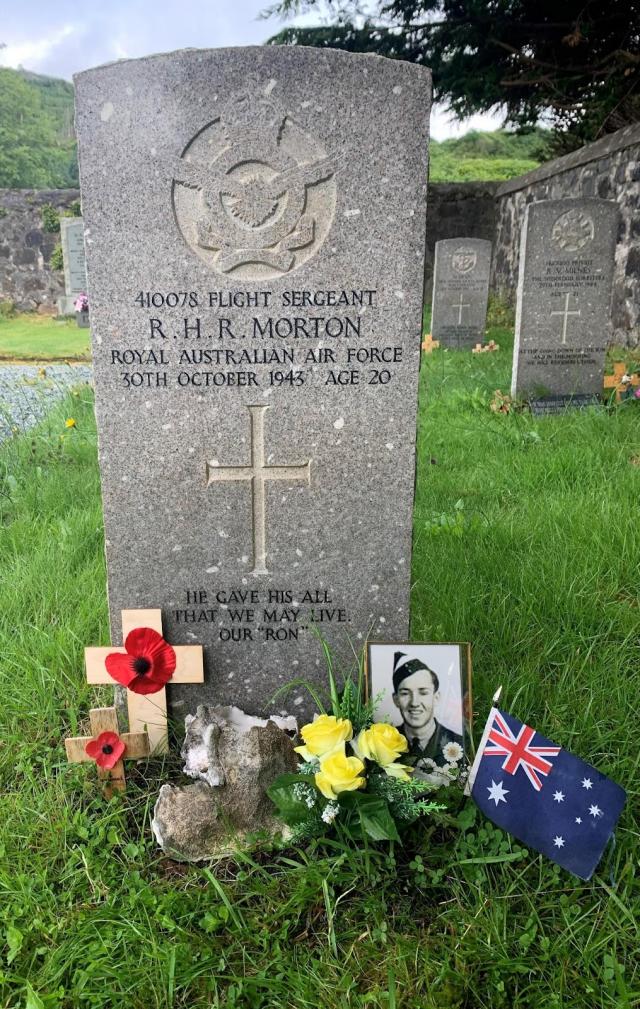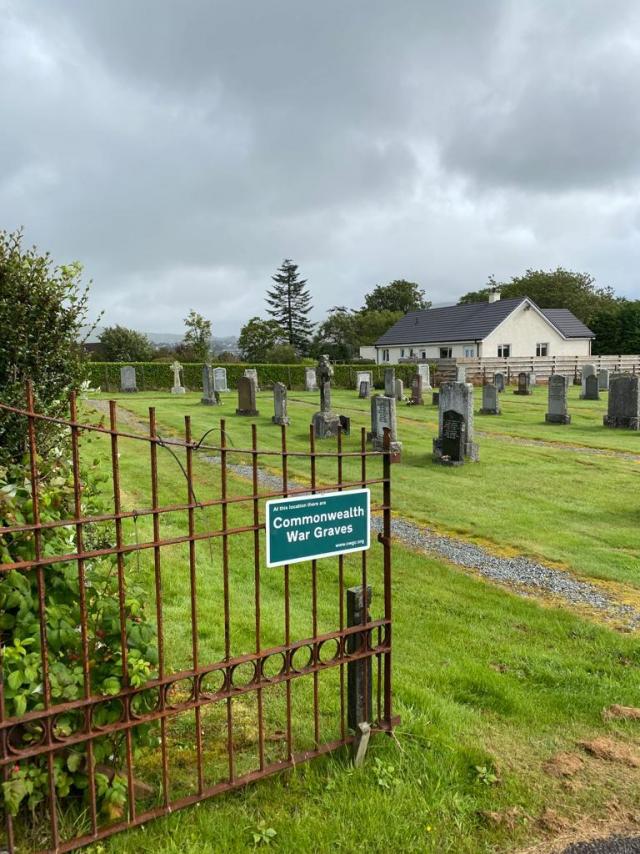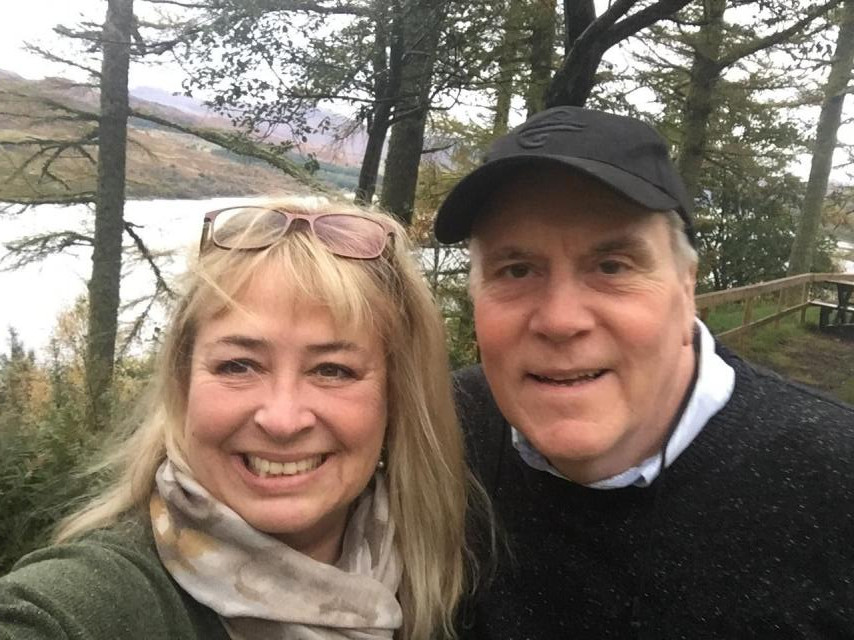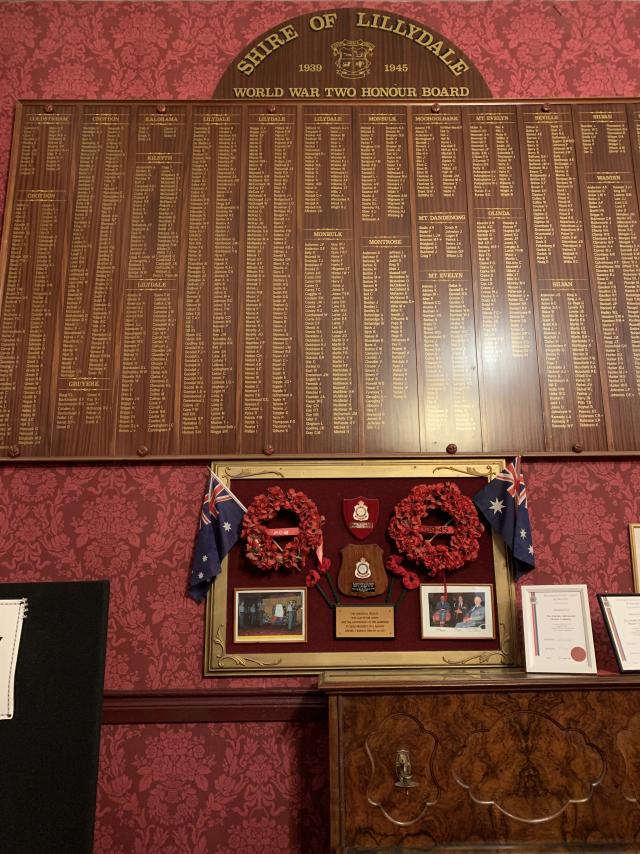
By Mikayla van Loon
The life and death of one Lilydale born World War II soldier has brought communities together from across the globe in search of a single photograph.
Flight Sergeant Ronald Henry Robert Morton enlisted in the Royal Australian Air Force in November 1941 at just 18 years of age.
Two years later he was killed in an aircraft accident when he and his crew took off from the RAF Long Kesh base on a non-operational night flight to St Kilda via Barra Head to return to Portrush.
The last communication from the flight crew occurred just after 11pm on 23 October 1943 and later an aircraft was reported in the Oban district.
Sgt Morton’s body was found two months later and was recovered on 9 December 1943.
He now lays to rest in Portree Cemetery on the Isle of Skye, Scotland.
The discovery of Flight Sgt Morton’s story and life is one that transcends oceans and continents, when three weeks ago a Scottish couple contacted the Lilydale Historical Society requesting a photograph of the late soldier.
Having noticed the original frame and photo that sat next to his grave had begun perishing in the weather, a replacement was sought.
Isle of Skye residents, Denise and Martin, who last year began volunteering with the Commonwealth War Graves Commission, have been tending to World War I and World War II graves across eight locations.
“We honour and care for people of the Commonwealth Forces who died in the first and second world wars enduring that they will never be forgotten,” Denise said.
“We are fortunate and proud to be a part of the team here on Skye and the UK team.”
As part of the Eyes On, Hands On project, Denise said volunteers ensure the more than 160,000 war graves spread across the UK are cared for, tended to and cleaned.
As part of their duty to the graves of mostly UK soldiers but some international servicemen, Denise said the initial assessment of Sgt Morton’s grave showed a need for the inscription to be infilled.
Going the extra mile, when Denise and Martin realised Flight Sgt Morton’s portrait photograph, that had a handwritten message on it, had been badly damaged, they decided to investigate further in order to replace it.
“Sadly, the picture had eroded and the frame was badly broken. Volunteers only remove personal items to clean the memorial then the volunteers must carefully place back all items.
“On completing subsequent visits Martin and I eventually found the frame yards away and the badly disintegrated picture had completely perished.
“We both thought that finding a replacement picture would be a mark of respect for this young man and his family members. Flight Sergeant Morton’s is the only memorial we care for that had a framed picture on it.”
First locating Lilydale, Victoria on a map, Denise said she then took to Facebook to begin searching for local groups to contact.
“The response was heart-warming and positive. Phil [Burton] from admin, Sharyn Manning and Bill Dobson President, Lilydale RSL were lovely, and they could not have been any more helpful or accommodating,” Denise said.
Lilydale Historical Society treasurer Philip Burton said requests like this don’t often happen, at least not from people overseas.
“It’s quite unusual,” he said.
“It’s quite nice that this couple from Scotland wanted to fix the graves. It shows great respect for World War II soldiers.”
Taking the request and posting it to the society’s social media, Philip said
“We were overwhelmed with the response and with people actually wanting to help, which was quite amazing. They were coming up with all sorts of suggestions,” he said.
Becoming the biggest, most far reaching post Lilydale Historical Society has ever had, over 40,000 people saw the post between comments and shares on the platform.
“It does show the value of historical societies and social media,” Philip said.
As a resident of Lilydale, Sharyn Manning said it’s important to keep stories of soldiers like this alive.
“It’s a very sad story, but the thing about it is these people who live on the Isle of Skye and they care enough to reach out to find a photo, it’s really nice,” she said.
“To keep those people alive, stories like this, the RSL could put these stories up of our local people that have served and given their life, especially the ones far far away, that helps keep the RSL alive too.”
Finally receiving a replacement photo of Flight Sgt Morton, Denise and Martin have reframed the photo, placing it next to the grave with some yellow silk roses.
“The interest and compassion shown by the residents of Lilydale was encouraging and overwhelming and reassured Martin and I that we had indeed done the right thing,” she said.
“We feel a connection with all of those whom we care for. Flight Sergeant Morton’s memorial inscription resonated with us both. ‘He gave his all that we may live. Our ‘Ron’”
Historian Anthony McAleer was able to uncover a legacy of service history in the Morton family, with Flight Sgt Morton’s uncle Jack and his father Frank both serving in the Anglo-Boer War, as well as his father returning to serve in World War I.
Another uncle, Thomas Morton, was killed in action during the First World War in 1916 in France. His name appears on the Lilydale War Memorial.
Ronald Henry Robert Morton was the son of Frank and Etta Morton. He was raised on Cave Hill Road in Lilydale and attended the Lilydale State School before his family fell on hard times after the death of his father and he was sent to carry out his education at the Tally Ho Boys Home in Burwood.
Eventually going to live with his married sister in Balwyn, it was here when he enlisted to serve in the Royal Australian Air Force, which took him to England.
The name R Morton is listed on the honour roll at the Lilydale Athenaeum Theatre.









